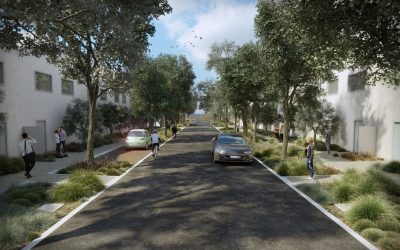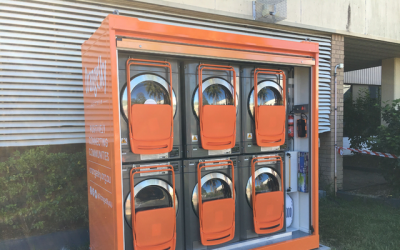Cooler, greener cities in Western Sydney
+ Executive Summary
Western Sydney is one of Australia’s most significant urban development areas, forecast to become home to one-million additional people over the next 20 years. It is a notoriously hot area, up to 10 degrees hotter than harbourside suburbs, and faces a myriad of water-cycle challenges including limitations on wastewater discharges into the Hawkesbury Nepean, soil salinity, and highly erodible waterways.
Bligh Tanner led the development of new urban typologies for this major new growth area (equivalent to a new city the size of Adelaide). The typologies resolve the combined challenges of urban density, housing affordability, and urban greening. The typologies are for low, medium and high density residential as well as commercial and industrial development, as well as typologies for the floodplain fringe. The typologies demonstrate that the parkland city objectives are able to be realistically implemented at a development scale, and are able to be facilitated through planning controls.
+ Stakeholders’ Reflection
NSW Minister for Water, Property and Housing, Melinda Pavey, said,
“Through innovative streetscape design and stormwater capture, we can significantly reduce the impact of hot, dry weather on our natural landscapes and built infrastructure.
The Urban Typologies and Stormwater Management report demonstrates the smart planning techniques that will guide development across Western Sydney and help reduce the Urban Heat Island Effects.”
Sydney Water Managing Director, Roch Cheroux, said the report was commissioned to help influence the design of buildings, open spaces, streetscapes and green corridors to deliver a true Western Parkland City, in what is currently one of the hottest and driest parts of Greater Sydney.
“Applying cooling actions such as permeable surfaces, tree planting, vegetation and irrigation will help to cool down Western Sydney, with modelling showing the number of extreme, very strong and strong heat-stress days per summer decreases dramatically from 47 to 19 days,”
+ Project Team Reflection
“Its implementation will achieve the NSW Government’s objectives of a cool, green and sustainable Western Parkland City,”Mr Stanish said.
Citing Utility Magazine







